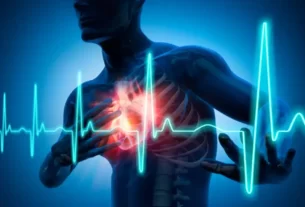The life expectancy and prognosis of patients with hypertrophic cardiomyopathy are highly variable. The clinical course is different. Some cases progress rapidly and others remain stable, even asymptomatic, for many years. Annual mortality is 1%. Most deaths in hypertrophic cardiomyopathy are sudden, and are more frequent in children and young adults.
Statistics on life expectancy in hypertrophic cardiomyopathy
Older publications on the prognosis and life expectancy of patients with hypertrophic cardiomyopathy were based on statistics obtained from patients who arrived at tertiary hospitals with symptoms or complications caused by the disease. Therefore, the results showed that it was a very symptomatic pathology with a mortality rate of up to 3% per year.
These statistics showed that children had a worse prognosis. They presented significant symptoms in 30% of cases. Sudden death occurred in 30% after 7 years of follow-up, with an annual mortality rate of around 7%.
However, the widespread use of electrocardiograms and echocardiograms has made it possible to diagnose milder and less symptomatic forms of hypertrophic cardiomyopathy. By including these cases in the statistics, the results show a lower incidence of symptoms and a mortality rate of 1% per year.
Hypertrophic cardiomyopathy and sudden death
Nevertheless, there are patients who are at high risk of sudden death. Death often occurs unexpectedly, especially in younger patients, although it can also occur in older people. However, death in very young children is extremely rare. Death frequently occurs in patients who have no symptoms or only mild symptoms.
It is not uncommon for sudden death in a person with hypertrophic cardiomyopathy to occur during exercise. Hypertrophic cardiomyopathy is the most common cause of sudden death in young athletes. Therefore, people with hypertrophic cardiomyopathy are advised to avoid vigorous exertion and competitive sports.
The cause of sudden death in hypertrophic cardiomyopathy is usually ventricular fibrillation, which is the most common form of cardiac arrest. However, in some patients cardiac arrest occurs due to asystole or electromechanical dissociation.
Several risk factors for sudden death in hypertrophic cardiomyopathy have been described. These include: family history of sudden death, onset of symptoms in childhood, previous syncope, exercise-induced hypotension, massive ventricular hypertrophy, left atrial size, subaortic gradient, development of atrial fibrillation and ventricular tachycardia.
Some more specific tests may show findings that are associated with a higher risk of sudden death. These include abnormalities in cardiac magnetic resonance imaging or the induction of severe myocardial ischemia in cardiac scintigraphy.
Other complications
About 10%-15% of patients with hypertrophic cardiomyopathy develop dilated cardiomyopathy. This progression is more frequent in patients with marked septal hypertrophy. In these cases, it is associated with a poor prognosis, due to sudden death or death secondary to terminal heart failure.
Patients with hypertrophic cardiomyopathy may have other complications. These include infective endocarditis, atrial fibrillation (found in up to 30% of older patients) and embolisms (occurring in up to 6% of cases).
In conclusion, the prognosis and life expectancy of patients with hypertrophic cardiomyopathy is not as bad as was previously believed. Back then, not all cases were diagnosed. Most patients have a good prognosis and a practically normal life expectancy. However, to reduce the risks, it is recommended that they avoid strenuous exercise and competitive sport. They should also undergo regular check-ups to assess the risk factors for death and apply appropriate preventive and treatment measures.



